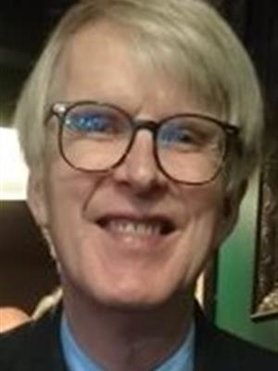

Prof. W.R. (Bill) Rossen
Prof. W.R. (Bill) Rossen
Profile
Research on multiphase flow through porous geological formations, including fractures, and simplified modeling of displacement processes. In particular, applications of foam injection into geological formations.
In 2020 I gave a lecture in the GeoScience and GeoEnergy Webinar series hosted by colleagues at TU Delft and Heriot-Watt U. One of the main themes is the surprises that come in doing research. The talk is available for viewing here.
In 2013 I wrote an article "Surface Physics Illustrated in the Operation of a Lava Lamp" for our Department student yearbook.
When one is appointed Professor at Delft University of Technology, one gives an introductory lecture (Intreerede) summarizing one's view one's field of research. I choose to give some reflections on the tension between complexity and simplicity in our modeling of complex phenomena in nature. The text should be read along with the slides; the slides are referred to by number in the text. Click to view text. Click to view slides.
In 2010 I was invited to write a short essay for the SPE publication for young professionals, The Way Ahead. I chose as a topic, "Should I Consider Graduate School?" Click to view text.
Reflections on teaching:
- Link to film interview when I was a candidate for Best Teacher of TU Delft in 2011. After the award I was interviewed for TU Delft highlights.
- Slides from a presentation I made in 2014 on my thoughts on University engineering education.
- I wrote an article for the 2021 yearbook of the Mjnbouwkundige Vereeniging on adaptations I've made to the BSc course in Physical Transport Phenomena to incorporate applications to geothermal research.
- for TU Delft highlights.
Publications
-
2024
Liquid injectivity in a SAG foam process
Effect of permeability
Jia Kun Gong / Yuan Wang / Ridhwan Zhafri B. Kamarul Bahrim / Raj Deo Tewari / Mohammad Iqbal Mahamad Amir / Rouhi Farajzadeh / William Rossen -
2023
Effect of Gas Composition on Surfactant Injectivity in a Surfactant-Alternating-Gas Foam Process
Jiakun Gong / Yuan Wang / Raj Deo Tewari / Ridhwan Zhafri B. Kamarul Bahrim / William Rossen
-
2023
Mechanistic Investigation of Vertical Sweep Efficiency in Miscible CO2-Water- Coinjection for EOR and CCUS
G. Yu / J. Tang / L. Li / W. Rossen
-
2022
A Novel Technique to Estimate Water Saturation and Capillary Pressure of Foam in Model Fractures
Kai Li / Karl-Heinz A.A. Wolf / William R. Rossen
-
2022
Foam-Oil Displacements in Porous Media
Insights from Three-Phase Fractional-Flow Theory
Jinyu Tang / Pablo Castaneda / Dan Marchesin / William R. Rossen -
Media
-
2016-04-01
De opbrengst uit een olieveld maximaliseren
Appeared in: TU Delft
-
2014-11-01
How to extract the maximum amount of oil from the earth. By editorial staff
Prizes
-
2014
Award for "outstanding service" as an SPE Associate Editor
Awarded at the Annual Technical Conference and Exhibition of the Society of Petroleum Engineers -
2012
IOR Pioneer
-
2011
Best Teacher TU Delft 2011
Awarded for his efforts and creativity in the lecture hall by being voted ‘best teacher’ at TU Delft in 2011
-
2006
Distinguished Member Award, Society of Petroleum Engineers
The Distinguished Member award recognizes SPE members who achieve distinction deemed worthy of special recognition. This award acknowledges members who have attained eminence in the petroleum industry or the academic community, or who have made significant contributions to SPE.
Ancillary activities
-
2023-07-03 - 2025-06-30
Education